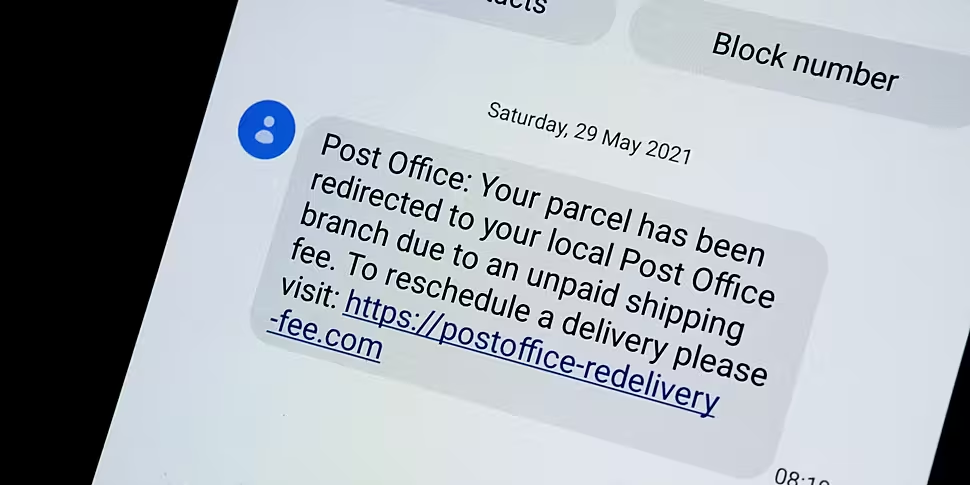Text scams are "increasing in frequency and sophistication”, Sinead Ryan, Presenter of The Home Show has warned.
Often called ‘phishing’, research suggests that 57% of people in Ireland have experienced it and the number has shot up in recent years.
“Phishing is where somebody is trying to use a hook and line to use your bank details - to get you to hand them over,” Ms Ryan explained to Lunchtime Live.
“And I know an awful lot of older people particularly worry greatly about somebody hacking into their computer and stealing all their money - that is very, very unlikely to happen.
“What’s far more likely is that a younger person is triggered into clicking into a link and voluntarily handing over their bank details - and that’s how they get scammed.”
The texts usually purport to be from state institutions and many people have no idea that they’re actually from a fraudster:
“The most common outlets are An Post, the HSE or Revenue,” Ms Ryan continued.
“So respected organisations that you wouldn’t be shocked if you got a text from them saying either that, ‘Your parcel is ready for delivery but there’s a tiny outstanding charge’ - the scam I got was only €1.80.
“Or, ‘You’re a close contact of somebody with COVID, click here to book an appointment for a test’ - that’s nonsense.
“Or, ‘You owe something to Revenue, your tax return didn’t go through, click here to rectify it.’
“So that kind of thing can appear a bit realistic; so when you click the link you’re brought through to a very sophisticated cloned but fake website - so it looks exactly like An Post.
“It looks extraordinarily like it and a quick giveaway is that URL at the top.
“So it won’t look be HSE.ie, it’ll be HSE986.ie or something that doesn’t exist.”
 Text message with smartphone. Man texting sms with phone. Catfish or mobile scam. Digital instant messaging chat. Macro close up of keyboard.
Text message with smartphone. Man texting sms with phone. Catfish or mobile scam. Digital instant messaging chat. Macro close up of keyboard.Ms Ryan continued:
“And in the time they take your card details, you know the Secure Customer Authentication where you get a code to your phone to put in - which annoys everybody but is there for good reason.
“In the time it takes for you to get that code to your phone, they have set up an account in your name on Google Pay or Apple Pay.
“They have cloned your details because you’ve handed them over… You hand them the code, the 123545 that’s just arrived on your phone. That’s now given to the fraudster and they can pretty much go off and buy whatever they want.”
At the end of the day, the best thing to do is not to click on the link and only communicate with an organisation with an email address or phone number listed on their website.
Main image: A scam text message seen on a smartphone screen in June 2021. Picture by: mundissima / Alamy Stock Photo









